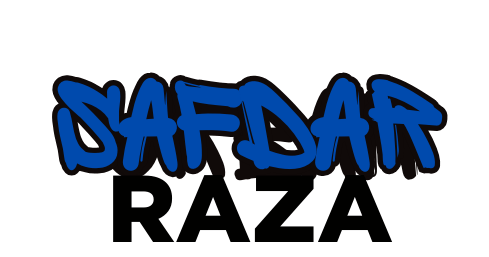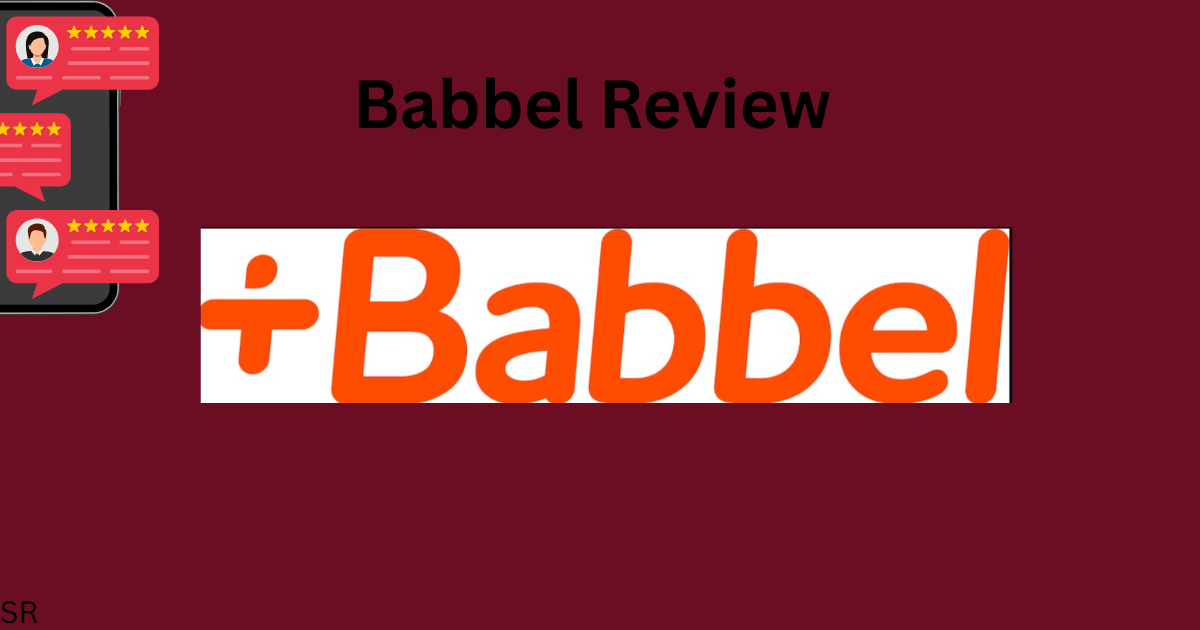
Hey there! Welcome to my complete Babbel review. I have been using Babbel consistently for 8 months now, putting in over 200 hours of study time across two different languages.
I’ve tackled Spanish lessons during my morning coffee, during lunch breaks, before bed, and even during those boring family gatherings (don’t tell my in-laws).
I’ve been exactly where you are. Frustrated with textbooks, bored by repetitive apps, and wondering if I’d ever speak another language confidently.
Then I discovered Babbel, and everything changed.
Over the next few minutes, I’ll give you the unfiltered truth about Babbel—showing you exactly how it works, who it’s perfect for, and whether it’s worth your time and money.
I’ll break down its features, share my real-world experiences, and provide the kind of detailed insights you won’t find anywhere.
Let’s dive into the details so you can decide if Babbel is the right language learning platform for your needs!

Babbel
Babbel is a subscription-based language learning platform that teaches practical conversation skills in 14 different languages. It’s not just a random collection of vocabulary—it’s a structured course designed by actual language experts and native speakers who understand how people actually learn to communicate.
Pros and Cons of Babbel
PROS:
- Real-world conversation skills: Babbel focuses on practical dialogues you’ll actually use in real life, not useless phrases like “the turtle walks slowly.”
After just two months, I was confidently ordering food in Spanish during a trip! Compare that to the two years of high school Spanish where I couldn’t even ask for directions.
If you want to learn Spanish effectively, this approach makes all the difference.” - Bite-sized learning that fits your schedule: The 10-15 minute lessons perfectly fit into those random pockets of downtime in your day.
I’ve completed lessons while waiting for my coffee to brew or sitting in doctor’s waiting rooms. No more excuses about “not having time” to learn a new language! - Speech recognition that actually works: OMG, I love this feature! Unlike other apps that can’t tell the difference between “pain” and “pin,” Babbel’s speech recognition actually helps improve your accent.
My spanish pronunciation improved DRAMATICALLY because the app wouldn’t let me proceed until I got it right! - Customized review sessions that stick in your brain: Instead of randomly showing flashcards, Babbel tracks what you struggle with and builds personalized review sessions.
Those Spanish verb conjugations I always messed up? Mastered them after two weeks of targeted practice that felt designed just for my weak spots. - Cultural insights that prevent embarrassing mistakes: Learning phrases is one thing, but understanding WHY and WHEN to use them is priceless. The Babbel app taught me that “¿Qué tal?” isn’t appropriate in formal situations in Spain.
CONS:
- Limited language selection: Babbel offers 14 languages, which might seem restrictive compared to some competitors with 25+.
But honestly, they’ve focused on quality over quantity. I’d rather have an excellent Spanish language course than mediocre lessons in 50 languages I’ll never use. - Subscription model feels pricey at first: Paying $83.40 upfront for a year might make you hesitate. But break it down—that’s just $6.95 per month for a skill that stays with you forever.
I spent more than that on coffee last week! And compared to traditional foreign language classes that run $300+, it’s an absolute steal.
The Babbel cost is actually quite reasonable when you consider the value. - Needs internet connection for full functionality: Can’t always access all features offline, which was frustrating during my camping trip.
Verdict – Is Babbel Worth The Money?
After 8 months and hundreds of hours learning with babbel across two languages on Babbel, I can confidently say YES, it’s absolutely worth it for most language learners.
For just $6.95/month (annual plan), you get a structured language learning system that actually works. When you have Babbel you get:
- Practical conversation skills you’ll actually use when traveling (I ordered entire meals in Spanish after just 8 weeks!)
- A learning method that sticks in your long-term memory (I still remember words I learned 6 months ago)
- Bite-sized lessons that fit into your busy day (I completed most lessons during coffee breaks)
- Speech recognition that fixes your pronunciation before bad habits form
- Cultural insights that prevent embarrassing mistakes abroad
You might think it’s expensive compared to free apps, but here’s the truth: I wasted YEARS with free options and barely progressed.
With Babbel, I was having actual conversations after just two months. That’s worth way more than $83/year! Besides, traditional language classes cost $300+ per semester, and private tutors charge $25+ per hour.
The app isn’t perfect. Some languages have more content than others.The interface could also use a visual refresh to make it more exciting.
But when you consider the rapid progress, practical learning approach, and the confidence to actually USE your new language skills, Babbel is a no-brainer.
Plus, they offer a 20-day money-back guarantee. Why hesitate? I wish I’d started years earlier instead of wasting time with textbooks and flashcard apps that never got me speaking confidently.
Who Is Babbel For?
You’ll love Babbel if:
- You’ve tried language apps before but got frustrated when you couldn’t actually SPEAK the language after weeks of effort
- You’re planning a trip abroad and want to confidently order food, ask for directions, and have basic conversations with locals
- You’re tired of memorizing random vocabulary that you’ll never use in real life
- You’re a busy person who needs flexible learning that fits into 10-15 minute pockets throughout your day
- You’ve taken traditional language classes before but couldn’t keep up with the pace or got bored with the textbook approach
- You want to understand the culture behind the language, not just memorize phrases
- You appreciate structured learning paths that guide you step by step rather than throwing random content at you
- You struggle with pronunciation and need feedback that actually helps you sound more natural
You won’t love Babbel if:
- You’re already advanced in your target language
- You prefer flashy games and points systems over actual learning (Babbel focuses on effective learning rather than dopamine hits)
- You’re looking for a completely free solution (though considering the quality, the price is a bargain compared to language classes)
- You expect to learn a new language without putting in any effort (sorry, but language learning always requires some commitment!)
- You have absolutely zero free minutes in your day (though if you can find time to scroll social media, you can find time for a Babbel lesson)
Babbel review Overview: What’s In The Box?
What is Babbel?
Babbel is a subscription-based language learning app that teaches practical conversation skills in 14 different languages. It’s not just a random collection of vocabulary—it’s a structured course designed by actual language experts and native speakers who understand how people actually learn to communicate.

What’s the key benefit?
The biggest thing that sets Babbel apart is its focus on REAL conversations you’ll actually use. While other apps have you memorizing phrases like “the elephant drinks milk,” Babbel teaches you how to book a hotel room, order in restaurants, and explain to a doctor what hurts. I was shocked when I actually understood responses from native language speakers after just two months!
What does it come with?
Your Babbel subscription includes:
- Complete lesson paths from beginner to intermediate levels
- Speech recognition technology that helps fix your pronunciation
- Review sessions that target your weak spots
- Cultural insights that explain the “why” behind language usage
- Podcasts for some languages to improve listening comprehension
- Live classes with real teachers (for an additional fee)
- Offline mode for selected lessons when you’re not connected
- Web and mobile app access with progress synced across devices
How is it different from competitors?
I’ve tried basically EVERY language app out there, and Babbel stands out in a few key ways:
Duolingo is more game-like but rarely teaches you to form your own sentences. Babbel focuses on practical conversations right from the start.
Memrise relies heavily on flashcards and memorization. Babbel puts everything into context with dialogues and conversations.
Pimsleur is audio-only and super expensive. Babbel gives you visual reinforcement, writing practice, AND speaking practice for a fraction of the cost.
The biggest difference? After using Babbel, I could actually SPEAK the language confidently. After the others, I mainly recognized words but couldn’t form my own sentences. That’s what matters in the end!
My 8-Month Journey with Babbel: The Good, The Bad, and The Surprising
What I Loved About Babbel
When I first downloaded Babbel, I was honestly skeptical. I’d tried and abandoned at least five other language apps before. But something clicked with Babbel that never happened with the others.
The first thing that won me over was how quickly I started forming my own sentences. Within just three weeks of using Babbel’s Spanish course, I found myself thinking in simple Spanish phrases.
I’d be at the grocery store thinking “Necesito comprar leche” instead of “I need to buy milk.” That NEVER happened with other apps where I was just matching words to pictures.
The speech recognition feature actually transformed my pronunciation. My friend (who took Spanish in college) used to laugh at my terrible accent.
After using Babbel for about a month, he was shocked at how natural I sounded. The app wouldn’t let me proceed until I got close to native pronunciation, which was frustrating sometimes but incredibly effective.
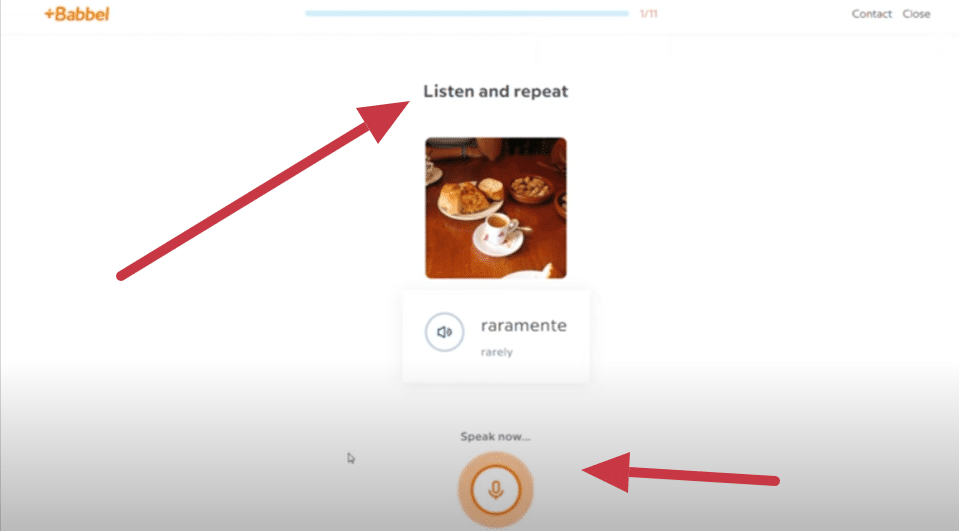
I also loved how Babbel introduces new vocabulary in context, then reinforces it through their review system.
I still remember words I learned six months ago because they were presented in memorable dialogues about real situations.
When I traveled to Mexico City in my fourth month of using the app, I successfully navigated taxis, restaurants, and even had a twenty-minute conversation with a local shop owner. I felt so proud of my ability to learn Spanish in such a practical way!”
What Could Be Better
It wasn’t all perfect, though.
The review system, while effective, sometimes felt repetitive.
There were days when I just wanted to learn new content, but Babbel kept pushing me to review old material. Yes, I know this is good for retention, but sometimes it felt like I was stuck in review mode forever.
And this is a minor complaint, but the cultural notes, while interesting, were sometimes too brief. I would have loved deeper dives into why certain expressions are used or how language reflects culture.
Surprising Benefits I Didn’t Expect
What really surprised me was how Babbel improved my confidence in real-world situations.
During my trip to Mexico, I wasn’t just ordering food—I was joking with waiters and asking for recommendations. The way Babbel structures dialogues around real scenarios made this possible.
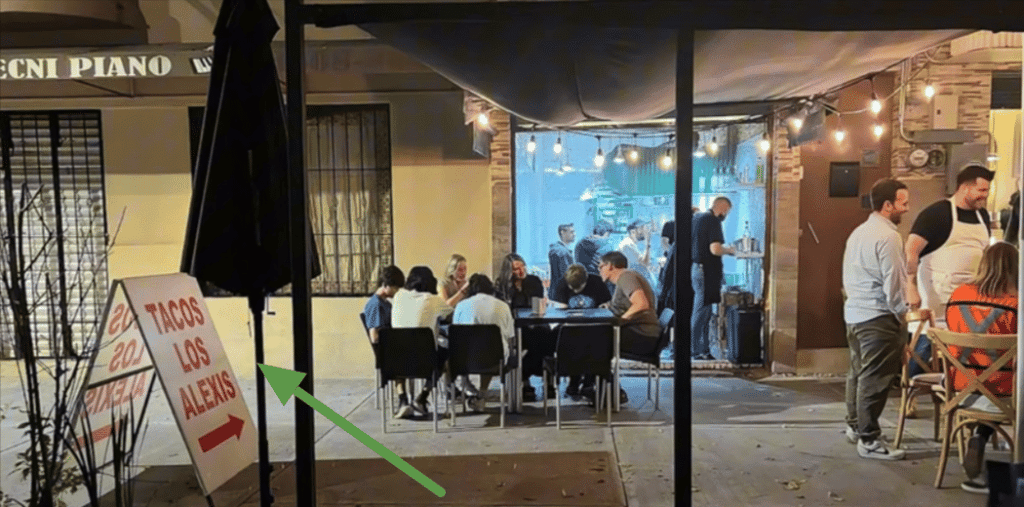
Another unexpected benefit was how it improved my English grammar understanding. Seriously! Learning how Spanish structures sentences made me more aware of English grammar rules I’d been following unconsciously my whole life.
Finally, I didn’t expect the community aspect to be valuable, but joining the Babbel Live classes (which I did try for a month) connected me with other learners and gave me conversation practice that accelerated my learning dramatically.
Bottom Line: Is It Worth It?
After 8 months and hundreds of hours across Spanish and French courses, I can confidently say my experience with Babbel has been worth every penny and minute invested.
The structured approach, real-world focus, and effective review system have given me practical language skills I’ve actually used in real life.
If you’re serious about learning a language for practical use (not just playing games with vocabulary), Babbel is the most effective tool I’ve found.
It’s transformed me from someone who “studied Spanish” to someone who actually speaks Spanish—and that’s the difference that matters.
Babbel’s Key Features Breakdown
1. Conversation-Based Learning Approach
What is it? Babbel structures its lessons around realistic dialogues and conversations that mirror real-world interactions.
Each lesson builds on previous ones, gradually introducing new vocabulary and grammar while reinforcing what you’ve already learned. You’ll practice ordering food, booking hotels, discussing hobbies, and having the kinds of conversations you’d actually have abroad.
Why is it special? Unlike apps that teach random words or bizarrely useless phrases, Babbel focuses exclusively on language you’ll actually use.
The dialogues are recorded by native speakers using natural speech patterns and realistic scenarios. This approach bridges the gap between classroom learning and real-world application.
My experience: This feature completely changed how I approached language learning. During my trip to Mexico City, I confidently navigated a taxi mixup because I had practiced similar dialogues in Babbel.
The driver had taken me to the wrong hotel, and I was able to explain the situation and get directions to the correct location—all in Spanish! The practical focus meant I wasn’t just recognizing words; I was creating my own sentences in real situations.
2. Speech Recognition Technology
What is it? Babbel uses advanced speech recognition to analyze your pronunciation and provide immediate feedback.
The system compares your speech patterns to those of native speakers and highlights areas for improvement. It won’t let you progress until you’ve achieved a reasonable pronunciation.
Why is it special? Many language apps either skip speaking practice entirely or use basic recognition that accepts almost anything. Babbel’s technology is genuinely picky about pronunciation but in a constructive way.
It identifies specific sounds you’re struggling with and provides guidance on mouth positioning and sound formation.
My experience: Before Babbel, my Spanish pronunciation was truly terrible. I couldn’t roll my R’s and butchered vowel sounds. The speech recognition feature forced me to slow down and focus on how words actually sound.
3. Personalized Review System
What is it? Babbel uses spaced repetition algorithms to create customized review sessions based on your performance. Words and phrases you struggle with appear more frequently, while concepts you’ve mastered appear less often.
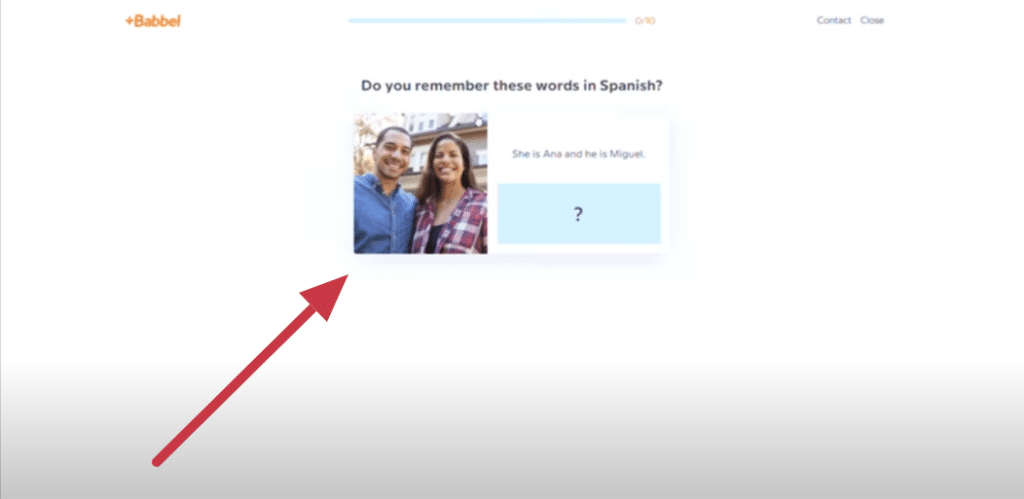
These reviews use various formats—multiple choice, dictation, speaking practice—to reinforce material from different angles.
Why is it special? The system adapts to your specific learning patterns rather than using a one-size-fits-all approach.
It identifies exactly which concepts you’re struggling with and focuses on those areas. This personalization ensures you’re not wasting time reviewing material you already know well.
My experience: The review system was frustrating at first because it kept bringing up verb conjugations I consistently messed up. But after a few weeks, I realized those conjugations were finally sticking in my memory.
4. Cultural Context Notes
What is it? Throughout the lessons, Babbel includes brief cultural notes that explain the context behind certain expressions, regional differences in language use, and important cultural norms that influence communication.
Why is it special? Language doesn’t exist in a vacuum—it’s deeply connected to culture. Understanding why certain phrases are used in specific contexts helps you communicate more naturally and avoid potential faux pas.
My experience: The cultural notes saved me from several embarrassing situations. For example, I learned that in Spanish-speaking countries, it’s common to greet people with a kiss on the cheek in social settings.
When I met my tour guide’s family in Mexico City, I was prepared for this custom instead of awkwardly offering a handshake.
5. Offline Mode
What is it? Babbel allows you to download selected lessons for offline use, so you can continue learning without an internet connection. The downloaded content includes all aspects of the lessons—audio, exercises, and review activities.
Why is it special? Many language apps require constant internet connectivity, which limits when and where you can study. Babbel’s offline functionality means you can learn languages during flights, in remote areas, or anywhere with spotty internet coverage.
My experience: The offline mode helped me maintain my learning streak even when connectivity wasn’t available, which kept my momentum going.
Conclusion: Is Babbel Worth It? My Final verdict
After 8 months of daily use across two languages, I can wholeheartedly recommend Babbel to anyone serious about learning a foreign language for practical use.
This isn’t just another app that teaches you how to say “The apple is red”—it’s a comprehensive system that develops real communication skills you can actually use in the real world.
The proof is in the results: I went from barely remembering high school Spanish to confidently navigating Mexico City, having extended conversations with locals, and even handling unexpected situations like lost reservations and transit mix-ups.
Babbel’s conversation-focused approach, accurate speech recognition, and personalized review system created a foundation of practical language skills that no other app or method had given me before.
Yes, some might hesitate at the subscription cost or wish for more advanced content.
But when you break it down to less than $7 per month for a skill that enriches your travel experiences, expands your career opportunities, and connects you with millions of new people, it’s an incredible value.
Traditional language classes would cost you hundreds more for the same level of instruction.
Don’t waste years dabbling with ineffective methods like I did before finding Babbel. Start your language journey today with their 20-day money-back guarantee.
Trust me—your future traveling self will thank you when you’re confidently chatting with locals instead of frantically searching for the translation of “Where is the bathroom?” on your phone.
